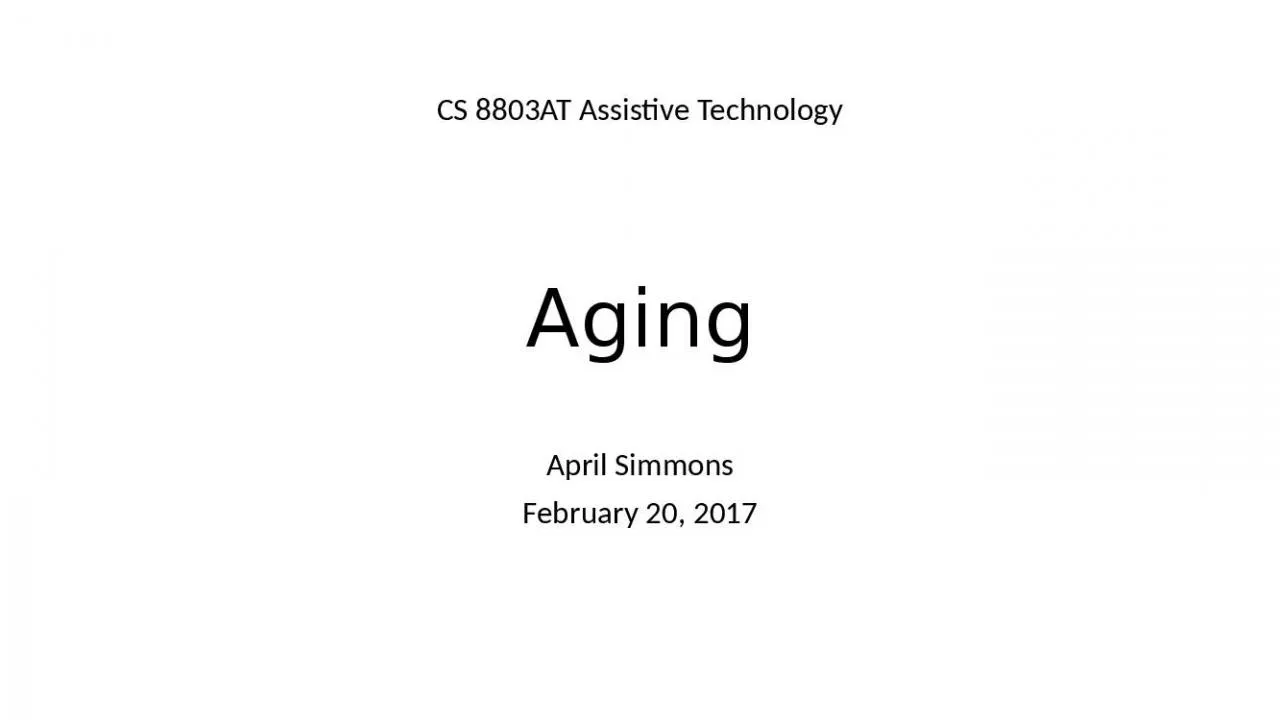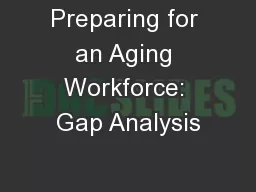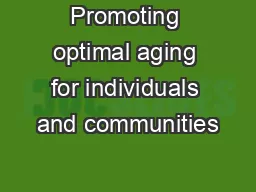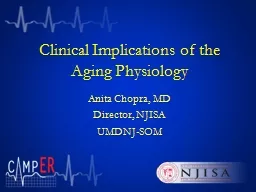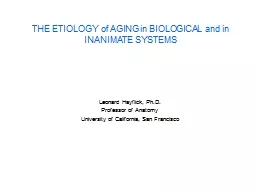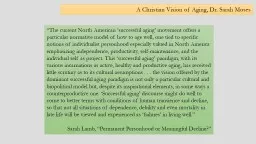PPT-Aging April Simmons February 20, 2017
Author : bitsy | Published Date : 2022-02-24
CS 8803AT Assistive Technology Outline Definition Causes Physiological Effects Personal Familial amp Social Effects AT Use amp Acceptance Definition Stages of Life
Presentation Embed Code
Download Presentation
Download Presentation The PPT/PDF document "Aging April Simmons February 20, 2017" is the property of its rightful owner. Permission is granted to download and print the materials on this website for personal, non-commercial use only, and to display it on your personal computer provided you do not modify the materials and that you retain all copyright notices contained in the materials. By downloading content from our website, you accept the terms of this agreement.
Aging April Simmons February 20, 2017: Transcript
Download Rules Of Document
"Aging April Simmons February 20, 2017"The content belongs to its owner. You may download and print it for personal use, without modification, and keep all copyright notices. By downloading, you agree to these terms.
Related Documents

